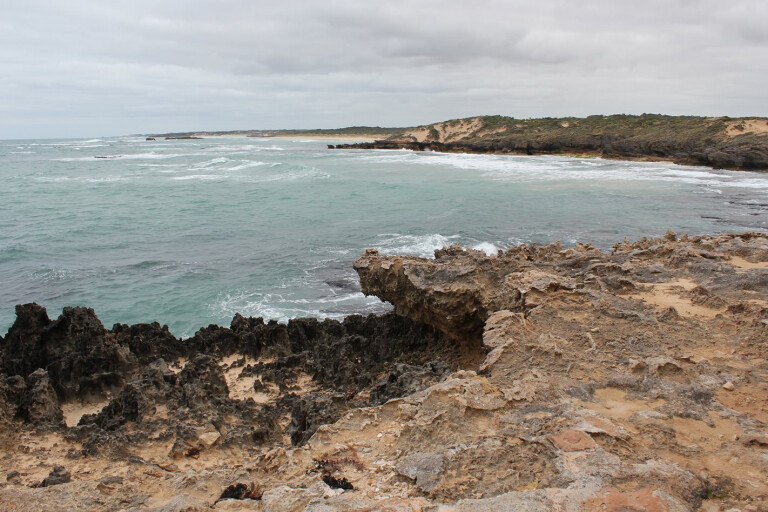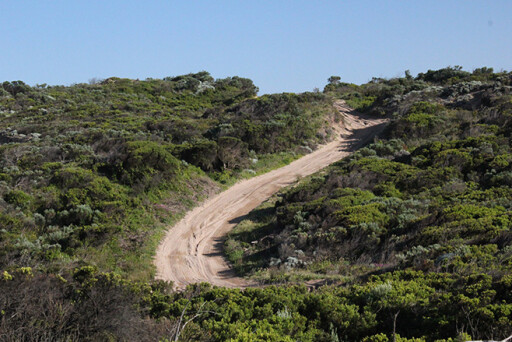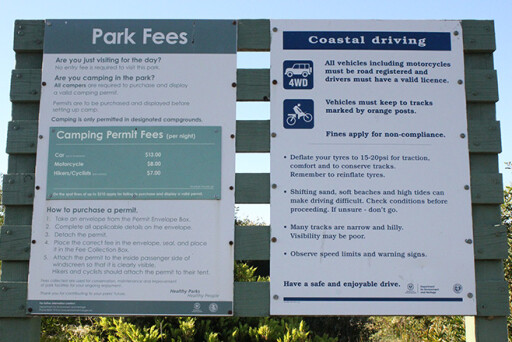
Your first glimpse of Robe is not what you would expect.
This article was originally published in the June 2014 issue of 4X4 Australia.
As you drive into the famed South Australian coastal town, you are greeted by a road nestled in thick scrub, weaving and winding past a couple of nondescript lakes before it disgorges you onto the outskirts of a small-town shopping strip. No sweeping views of an azure sea, or coastal bluffs to take your breath away – your welcome is a bit unspectacular really.
 Robe is no Cote d’Azur; it’s far more subtle than that. The small town is on one of Australia’s most breathtaking coastlines – the Limestone Coast. This region of South Australia is one of Australia’s best natural environments, featuring some outstanding spots for four-wheel driving, fishing, bushwalking and camping.
Robe is no Cote d’Azur; it’s far more subtle than that. The small town is on one of Australia’s most breathtaking coastlines – the Limestone Coast. This region of South Australia is one of Australia’s best natural environments, featuring some outstanding spots for four-wheel driving, fishing, bushwalking and camping.
South of the Robe township, nestled into the rugged coastline, sits Little Dip Conservation Park. The park protects numerous lakes in the area and can be accessed via Nora Creina Drive, which is mostly unsealed roads, or from the coastal tracks from Robe.
 The park has four camping grounds, which vary in accessibility and outlook. The Long Gully Campground is probably the most accessible for those trailing a camper trailer or caravan, with flat, open grounds and just a swing at the entrance. The other campgrounds – Old Man Lake, Stony Rise and The Gums – are much tighter for access and camping spots, but offer more shade and better access to the beach.
The park has four camping grounds, which vary in accessibility and outlook. The Long Gully Campground is probably the most accessible for those trailing a camper trailer or caravan, with flat, open grounds and just a swing at the entrance. The other campgrounds – Old Man Lake, Stony Rise and The Gums – are much tighter for access and camping spots, but offer more shade and better access to the beach.
There’s no power or drinking water at the park, so you’ll have to bring in all supplies, but it’s graced with a pit toilet and a rainwater tank.
The Long Gully Campground is in a hollow about one kilometre from the surf and is well-protected from off-shore winds by the surrounding hills. Midges are known to love this area, so you’ll need adequate protection when camping here, especially in the warmer months.

The sand tracks to the beaches among the dunes are easy, but it is a good idea to lower your tyre pressures. Tyre pressures of 15-18psi should do the trick, but be prepared to set them lower still.
The beaches here are renowned for their ability to suck a 4x4 down to its chassis like quicksand. The combination of coarse sand and the right amount of moisture (or lack of it) result in beaches that easily become very soft and boggy. If driving the beaches in a single vehicle, sand tracks and a long-handled shovel are a must. But it’s advisable to go in convoy and take a snatch strap.
 On some of the beaches, the clear, aqua surf can be quite calm, while the sand tends to feel like a pumice stone on the feet due to its coarseness.
On some of the beaches, the clear, aqua surf can be quite calm, while the sand tends to feel like a pumice stone on the feet due to its coarseness.
The beaches hold the secrets of the Bunganditj (Bo-an-dick) people, who were the first to live in this coastal environment. They lived on the coast from Robe to the mouth of the Glenelg River at Nelson in Victoria for more than 30,000 years. Shell middens, rock shelters and burial grounds in the area are a reminder of the lifestyle of the land’s original custodians.
 The bay in which Robe is nestled was first noted by an expedition in 1802, when it was named Guichen Bay by Nicholas Baudin in honour of Admiral de Guichen. In 1846, the town and port were surveyed by the South Australian Government and became what we now know as Robe. It was named after the Governor of South Australia, Lieutenant Frederick Holt Robe.
The bay in which Robe is nestled was first noted by an expedition in 1802, when it was named Guichen Bay by Nicholas Baudin in honour of Admiral de Guichen. In 1846, the town and port were surveyed by the South Australian Government and became what we now know as Robe. It was named after the Governor of South Australia, Lieutenant Frederick Holt Robe.
The town and port boomed over the next two decades. By 1856 Robe had become the second major colonial out-port, attracting settlers and merchants alike. Today, it is the surf that is a major attraction and the envy of many coastal towns. Long Beach is home to the National Kite Surfing Championships and the Robe Surfing Classic, while Beachport and Browns Bay east of Port MacDonnell attract lots of surfers.
 If jumping out on a board isn’t your thing and you prefer getting your feet wet with a trusty rod and line, then fishing on the beaches in the park can yield a catch of salmon, mulloway, rays, flathead, snapper and King George whiting. Rock fishing for salmon, mullet, snapper and sweep is popular at Stony Rise and Little Dip.
If jumping out on a board isn’t your thing and you prefer getting your feet wet with a trusty rod and line, then fishing on the beaches in the park can yield a catch of salmon, mulloway, rays, flathead, snapper and King George whiting. Rock fishing for salmon, mullet, snapper and sweep is popular at Stony Rise and Little Dip.
In addition to exploring the numerous beaches and headlands, there are also two walking tracks in the park. The Fresh Water Lake Walk takes you along the exposed, rocky coastline and into the coastal mallee. And the walk along the Big Dip Lake to the Lake Eliza Hike offers views across the plains to the Woakwine Range.
 The most difficult part of staying in the Little Dip Conservation Park is trying to decide how long to stay because there’s a raft of beautiful natural locations on this part of the Great Australian Bight.
The most difficult part of staying in the Little Dip Conservation Park is trying to decide how long to stay because there’s a raft of beautiful natural locations on this part of the Great Australian Bight.
TRAVEL PLANNER
WHERE
Robe is situated on Guichen Bay, 350km south-east of Adelaide, and 550km west of Melbourne, near the South Australian border.
CAMPING
The Little Dip Conservation Park has four camp grounds: Long Gully, Old Man Lake, Stony Rise and The Gums. Camping fees at the time of writing are $13 per vehicle (maximum of eight people). Extra persons are $7, or $5 for each person in parties of 20 or more.
 WHAT TO TAKE
WHAT TO TAKE
Drinking water and all other supplies. Top-up with fuel before entering the park at Robe.
SUPPLIES AND FACILITIES
Only basic facilities are available in the park – a pit toilet at Long Gully. The closest major centre is Robe itself, 13km to the north, for food and fuel supplies. Both wood and solid fuel fires are prohibited throughout the year, while gas fires are allowed other than on days of total fire ban. On the ocean beach foreshores, wood and solid fuel fires are permitted between the high and low water marks, except for total fire ban days.
TRIP STANDARD
The road to the park entrance on Nora Creina Rd is sealed for a short distance, but the remainder is unsealed two-lane roads. The last kilometre to Long Gully Campground is rough and potholed. There is plenty of wildlife out at night in this area, so if arriving or leaving between dawn or dusk, drive with extreme caution. Beach driving is permitted on most beaches in this area, but fitting a sand flag is highly recommended. Sand here is coarse and can be very boggy and difficult to traverse, even for the experienced four-wheel driver. Speed is restricted to 40km/h. Sand tracks and a long-handed shovel should be taken as a minimum, and tyre pressures should be set low, around 15psi.
CONTACTS AND INFORMATION
Visit South Australia
Robe tourism
Department of environment, water and natural resources

COMMENTS